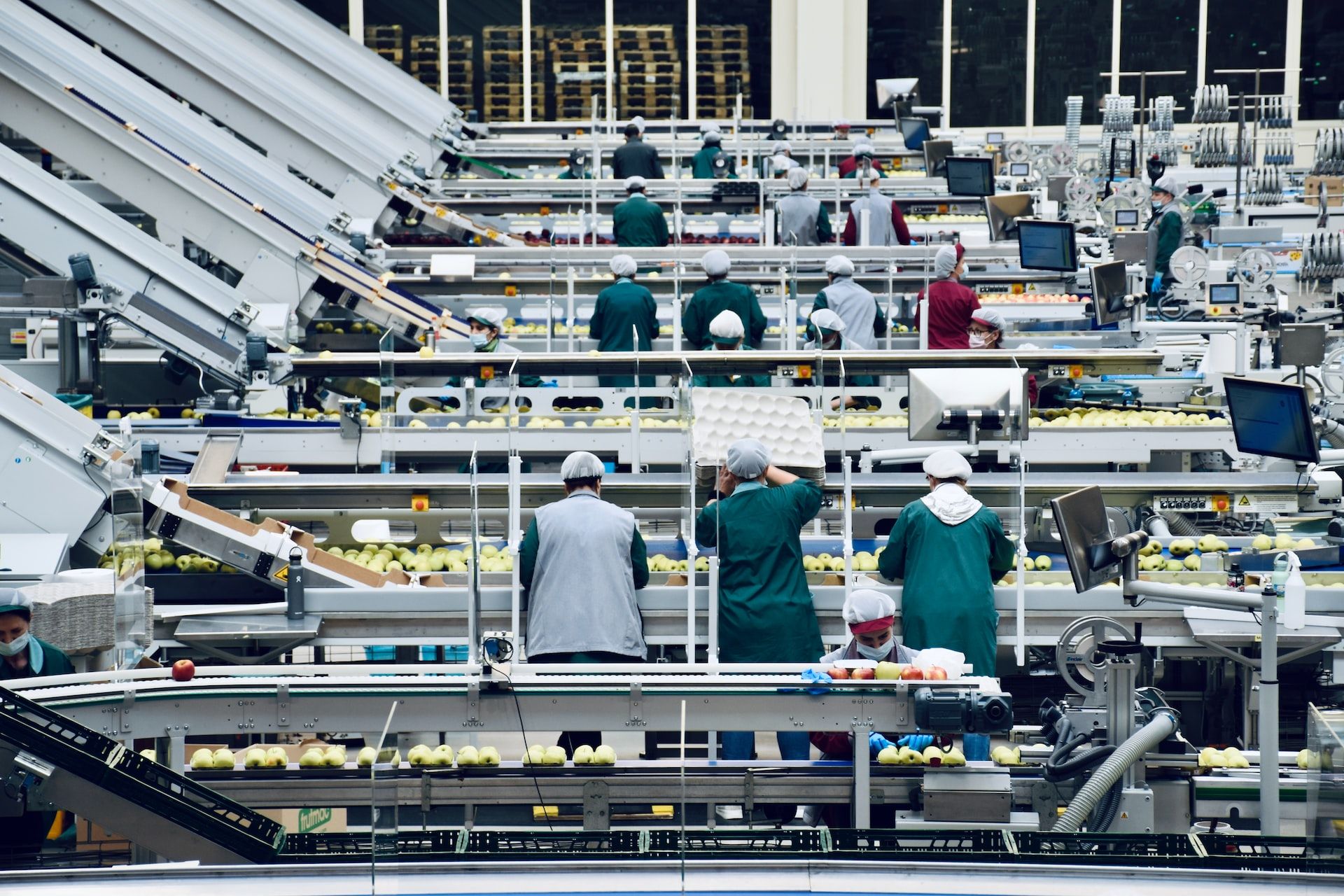Do you run a manufacturing company? Have you faced the repeated challenge of none of your two days looking the same? Has this affected your ability to meet your deadlines? Are you concerned that your customers are not satisfied with your products and services? Are you worried about how to better handle the variables involved in your manufacturing facility?

If the answer to all of these questions is yes, then your solution lies in shop floor scheduling. Consider a situation. One of your operators calls in sick and cannot make it to work. A piece of essential equipment breaks down unexpectedly. The materials that you need have arrived on site, but they are not of the quality you need. Your customer wants an order at an earlier date.
When you are running a manufacturing company, there are endless possibilities and variables that you cannot control. What you can, however, control is how well you are prepared to handle them. This is a very important task because the one aspect that remains constant irrespective of everything is that you will need to deliver your orders on time, each time.
In order to ensure this, your shop floor, which is the physical area in your facility where goods are manufactured, needs to run like a well-oiled machine. This is made possible only after careful coordination of all resources, ensured through accurate, up-to-the-minute shop floor scheduling.
However, to help you get a better understanding of shop floor scheduling, this article will cover the following topics:
- What is the Shop Floor?
- What is Shop Floor Scheduling?
- Importance of Shop Floor Scheduling
- 4 Common Approaches to Shop Floor Scheduling and Why They Fail?
- 12 Ways to Improve Your Shop Floor Scheduling
- 8 Essential Features to Look for in Shop Floor Control Software
- How can Deskera Help with Shop Floor Scheduling?
- Key Takeaways
- Related Articles
What is the Shop Floor?
In a manufacturing company, the shop floor is a part of the factory or space where people work with machinery (which can be automated) and tools to manufacture goods.
Your shop floor will also include your inventory and storage. This means that anything related to the physical manufacturing of your product is part of the shop floor.
Thus, your shop floor management includes systems and strategies to:
- Rank
- Track and
- Report production orders and schedules
However, without a proper shop floor schedule in place, it becomes difficult to bring together all these different elements.
What is Shop Floor Scheduling?
Shop floor scheduling is the process of breaking down a work order into its individual operations and assigning each operation a theoretical start and completion time.
Usually, this is done by starting with the promised shipment date to the customer and then working backward from it to determine when the operation needs to start. Commonly, this is known as backward scheduling.
The drawback of backward scheduling is that it schedules each work order as it is the only order in the shop. This is why capacity management is very important in shop floor scheduling.
Capacity management will help in determining how much machine and labor resources are required to accomplish the tasks of production. This insight is crucial for shop floor scheduling.
Everything that is related to manufacturing is taken into consideration by the shop floor scheduling. This includes:
- Inventory
- Resources
- Capacity limits
All these elements are then coordinated to form a master production schedule (MPS) to let your managers and operators know:
- What needs to be done?
- Who needs to do it?
- When does it need to be done?
However, to be able to control these activities effectively, as a manufacturer, you will need to understand the infrastructure of your business. This will give you a clear understanding of how your shop floor operates, which will further help you in having accurate shop floor scheduling.
Sometimes, shop floor scheduling is also referred to as shop floor-level management, shop floor management, and shop floor control.
Importance of Shop Floor Scheduling
For the success of your manufacturing company, effective and efficient shop floor scheduling is essential, as without it, or even by having an inefficient shop floor scheduling in place, you are leaving your company vulnerable to a host of issues.
Thus, the importance of shop floor scheduling is as follows:
- Without shop floor scheduling, or even with inefficient shop floor scheduling, you will be unable to meet your customer commitments. This will result in dissatisfied customers and, inevitably, loss of business.
- The loss of business will ultimately result in a loss of revenue, which will put your company under a financial strain, with your financial statements reflecting it.
- In fact, without shop floor scheduling, your vendor relationships can get strained as well. This can lead to supply chain inefficiencies, causing you to either have excess or too less inventory. This will cause a direct strain on your inventory management.
- Poor shop floor scheduling or absence of one is likely to put your employees through undue stress, as they will find themselves faced with the challenge of constantly trying to catch up on work. This will make it difficult for them to manage their workplace stress, negatively impact their quality of life, and result in higher turnover rates. It will also affect your ability to retain top talents at your company.
- Lastly, poor shop floor scheduling will lead to the stealing of time, resources, and attention from other important areas, such as optimizing processes and acquiring new skills.
Thus, if you want to save your company from these and more such challenges, you should resort to shop floor scheduling and an efficient one at that.
4 Common Approaches to Shop Floor Scheduling and Why They Fail?
While there are many ways to approach shop floor scheduling, each with its own set of drawbacks and benefits, the four most common ways of the same are:
Manual Scheduling
Manual scheduling is one of the approaches to doing shop floor scheduling. This is done with the help of sticky notes, stacks of paper, whiteboards, or excel spreadsheets, and complex equations.
While this is one of the most complex and basic forms of shop floor scheduling, this is one of the most popular approaches due to its affordability and relatively low barrier to entry.
However, the drawback of this approach is that it has high maintenance costs, is labor intensive, and is prone to errors. In fact, to top off all of this, manual scheduling quickly becomes outdated because they do not allow dynamic capacity management.
This drawback is applicable even in the case of spreadsheets, as even they do not have access to real-time information about all the shop floor variables. They need to be updated manually.
Manual schedules are with a person or with few people rather than it being accessible by all the employees and operators. This slows down the information flow while affecting the productivity of your workforce.
Enterprise Resource Planning (ERP) Software
Letting an ERP system handle shop floor scheduling is a major improvement from manual scheduling. This is because ERP systems streamline shop floor scheduling through automation. This helps in saving valuable time which would have otherwise been spent on manual data entry.
Additionally, ERP systems also include some degree of predictive analytics functionality, which thereby allows for dynamic capacity management. However, the drawback of using ERP systems for shop floor scheduling is that they prioritize work orders by their due dates. Just because one work order has an earlier due date does not necessarily mean that it has a higher priority.
For example, you have two work orders. One order needs to be completed in two weeks’ time, while the other one needs to be completed in a month.
Now, if you look at this situation from the perspective of their due dates, then your shop floor employees have more time to complete the other order. But, in reality, the other order is highly complex, with multiple moving parts, which could jeopardize on-time delivery.
In comparison, though, the two-week order is simple, with the guarantee that it will most likely be completed on time. Based on these insights, the one-month order should be prioritized above the two-week order.
This analysis is something that the ERP systems cannot account for on their own, which therefore prevents you from getting an accurate picture of what your shop floor team needs to work on.
The other issue which might occur with ERP systems is that, typically, they tend to operate on an infinite capacity-loading scheduling model. This means that even if your facility is open for only 40 hours a week, your ERP system might assign your team 80 hours of work in a week. This results in overloading the capacity of your people and machines. Shop floor scheduling thus becomes untrustworthy.
Finite Capacity Loading Scheduling
This is the next evolution after the ERP scheduling. In this shop floor scheduling method, the finite capacity of your machines and personnel is recognized and accounted for. This means that finite scheduling will only load resources based on their capacity.
If the capacity is fully booked for a day, then the system will simply schedule the remaining work for the next day, and so on. It is because of this reason that finite scheduling is also known as level-loading.
However, the shared drawback of this approach and the ERP approach is that finite scheduling systems too often prioritize work orders based only on their due dates and without considering the short-running vs. long-running jobs.
Another issue with this approach is that finite scheduling is challenging to set up and maintain. For this approach to work, your estimates for set-up, machine runtime, and work completed reporting all need to be at least 95% accurate.
If your company produces a single catalog item over and over again, then this reporting would not be an issue as you would how long that item takes to manufacture.
However, if your company is engaged in producing multiple components or make-to-order manufacturing to any degree, then the aforementioned reporting becomes a whole lot more difficult.
Without this accuracy, the finite scheduling approach for shop floor scheduling would be inaccurate and, therefore, not useful.
Drum-Buffer-Rope (DBR)
Theory of Constraints (TOC) is a process improvement methodology that says that businesses can achieve their financial goals simply by identifying their system constraints or bottlenecks and eliminating them.
The most popular application of TOC in manufacturing operations is DBR, which aims to maximize throughput by adjusting buffers with a rope and controlling speed with a drum. This means that the DBR method assumes that critical resources will, at some point, be constrained and builds the shop floor schedules accordingly.
DBR was the first shop floor scheduling method that introduced the concept of buffers. A buffer is a certain amount of material or time included in a schedule in order to protect a work order from variability.
Considering that DBR does not rely on load or capacity to make its shop floor schedules, it is far easier to use than finite scheduling.
While DBR is a more effective approach than those discussed up till now, its drawback is that its systems do not include predictive analytics functionality. This means that while a DBR system can tell you whether a job is moving and whether it is likely to be completed on time or not, it cannot definitively say whether it will be completed on time or not.
Without the inability to see whether a job is going to be late, you cannot create a contingency plan that will let you meet your work order deadline. This, thus, takes a good chunk of accuracy away from your shop floor scheduling.
12 Ways to Improve Your Shop Floor Scheduling
Choosing the right shop floor scheduling method is just the start of optimizing your processes to ensure on-time delivery. Some of the best practices that you can implement to improve your shop floor scheduling and ensure that everything goes as smoothly as possible are:
Knowing When to Start Production
While scheduling production is one thing, knowing when to begin production is another equally important matter. While it might seem logical to begin production as soon as manufacturing orders are generated (and most cloud-based manufacturing software production schedules are this way), it is not always a viable option.
The reason behind this is that you run the risk of overburdening your work-in-progress (WIP) manufacturing by sending manufacturing orders to a workstation too soon. To avoid this issue, it is important that you develop a plan or take advantage of shop floor scheduling software that will give you the necessary flexibility.
When you focus on this aspect, you will be able to prioritize your orders efficiently, rather than just completing them one by one, and risk-reducing your net profit, as well as customer loyalty.
Make Sure that the Job can be Worked on in the First Place
Before you schedule a manufacturing job, you need to verify that you have everything you will need to complete it. For instance,
- Do you have the correct drawing? or process?
- Do you have the right materials in stock? Will you need to order more?
- Will you be able to complete the job during regular working hours, or will you need to schedule overtime?
Asking these and more such questions will help you in warding off potential problems, have high productivity, and earn high gross profits.
Shop Floor Variability
While it is possible for you to have your shop floor scheduling done till the minutest detail, there will still be a lot of issues that will arise, negatively impacting your production. Examples of the same are:
- Late deliveries of raw material
- Employees unable to come in and finish a job
- An important order comes through and puts all other projects on hold
The four primary types of variability to look for are:
- People
- People call out sick
- People show up late for work
- People do not show up at all
- People who do show up lack the necessary skills for the job
- Machine
- Machines break down
- Machines do not operate as expected
- Machines create problems that require rework
- Materials
- Materials do not arrive on time
- Materials do not arrive at all
- Materials arrive but aren’t exactly what you ordered
- Materials arrive but are of poor quality
- Customers
- The customer changes their mind
- The customer wants something different than what was originally discussed
- The customer wants to move up the deadline
These are those inevitable problems that will tend to arise in your company. Your shop floor scheduling should be able to anticipate these problems and have the flexibility to adjust your production accordingly, letting you make your products efficiently. This will help in increasing your net profit ratio and improve your customers’ retention.
Raw Material Inventory Management
In order for you to be able to follow your shop floor scheduling, you will need to keep your raw materials and components ready as would be required to complete your manufacturing orders. This, however, does not mean that you stock up your inventory just in case you get a load of orders.
If you do this, you will end up incurring additional expenses like increased carrying costs that might even have an impact on your working capital. Additionally, doing this will also result in valuable storage space being occupied by something that might not even be used.
This is where raw material inventory management comes into play. Raw material inventory management will help you understand how much inventory you need. Once you have that insight, you will be able to plan your shop floor scheduling to include the following:
- A realistic output of finished goods
- The manufacturing lead times
Demand Planning
One of the other practices that will improve your shop floor scheduling and even your inventory management is demand planning. Demand planning will allow you to make an educated prediction on your future demand by looking into the following:
- Seasonality sales
- Your competition sales
- Your historical sales
Anticipating your future orders through demand planning will help you better plan your shop floor scheduling. This will considerably increase your accounts receivable as against accounts payable while also improving your cash flow.
Eliminating Manual Processes
Manual processes tend to be time-consuming, labor-intensive, and can substantially slow production. This is applicable even if your business is using spreadsheets and google sheets. Manual processes become especially inconvenient as your sales increase, your business expands, and your manufacturing processes become more complex.
Additionally, manual processes are inefficient as they require constant manual updates. This means that one mistake can lead you to making a business decision with information that is incorrect, leading to either an inefficient choice or a loss.
Some of the problems that you will encounter due to manual processes are:
- Playing catch-up from simple human error
- Pouring human resources into keeping them updated
- Having trouble capturing data on your production
- Slowing down your business’s growth
And so on.
Thus, introducing automation wherever possible will help you in saving a lot of your resources while also streamlining your process and enabling your workers to focus on what is really important.
Simplifying Your Quoting Process
One of the other ways of improving your shop floor scheduling is by taking a different approach toward quoting processes.
Most probably, up till now, to generate each new quote, you had to manually calculate the costs and locate and compare older quotes to help you generate a new one. While this approach might be ideal for when your orders are predictable and come in one at a time, this does not happen in the real world, making it a faulty approach.
The longer you take to process and generate quotes, the longer you, your staff, and your customers will have to wait before production can begin. This waiting period becomes an unproductive and unprofitable time for your company.
In fact, if it becomes too long, it can even affect your brand awareness, financial KPIs, and your ability to encourage returning customers.
Capacity-Loading Scheduling
To be able to efficiently undertake your capacity loading scheduling, you will need shop floor scheduling software that will be able to provide you with data to analyze your production lines.
The basic principle of capacity-loading scheduling is to schedule production based on what is achievable. The two ways of doing this are:
- Forward Scheduling- Calculating the earliest time you can complete a customer’s order.
- Backward Scheduling- Calculating the start date of production, depending on available resources and material from the due date.
Regardless of whether you choose forward scheduling or backward scheduling, calculating the capacity of your workstations will allow you to better schedule your jobs. This will help you in maximizing your operating income and improve your operational metrics and business metrics.
Getting Set-Up with Real Time Tracking
In order to be able to understand what is happening on your shop floor accurately, you will need a system that can provide you with an overview of your production in real time. You thus need to implement a shop floor scheduling software that has real-time tracking.
This will let you monitor and make business decisions on the spot on:
- Inventory
- Production progress
- Employee status
Being able to get this information quickly while being updated constantly means that you will be able to easily:
- Reduce waste
- Minimize downtime
- Maximize output
- Reduce your manufacturing overheads
- Predict accurately the time taken to complete an order
Dynamically Prioritize Work Orders Based on Variability
While adopting the DBR approach to shop floor scheduling is just the start, the next step that must be taken is to invest in a solution that will automatically,
- Build in buffers in your shop floor schedules
- Dynamically prioritizes work orders
- Adjusts schedules according to variability.
All of this will help your shop floor schedules to be accurate.
Clearly Display Job Prioritization at Each Manufacturing Station
For your shop floor schedules to be carried out swiftly and efficiently, it is important that you make it easy for your employees to stay on top of new work orders.
You should even change shop floor schedules by displaying job prioritization in prominent locations around the shop floor. In fact, you can even take this a step further by implementing a shop floor control system that features easy-to-understand visual dashboards.
Provide Electronic Access to All Documentation Associated with a Job
You should implement a shop floor scheduling system that can help you here. This system should allow you to:
- Develop a knowledge base of all current and future employees
- Share best practices of shop floor
- Electronically store documentation for various jobs and work orders in a single consolidated and accessible location
8 Essential Features to Look for in Shop Floor Control Software
While there are multiple shop floor scheduling systems in the market, they are not the same. They have their own features and functionality, some having more than others, helping you to enhance your on-time delivery rate.
To achieve the highest level of success with your shop floor scheduling, having a high-quality system in place which also fulfills the needs of your business is a must.
Except for the shop floor control system being simple to set up, easy to use, and reliable, some of the other features and functionality that your shop floor control system must have to ensure accurate shop floor scheduling are:
Clear Visual Dashboards
Your shop floor control software should be able to present your schedules in an easy-to-understand visual format. Additionally, it should also be able to color-code your job sequences based on priority.
This will make it easier and more accessible for your floor staff to see what needs to be worked on and when and for your managers to see the status of different jobs.
An Intuitive User Interface
Your shop floor scheduling solution should be simple, intuitive, easy to navigate, and accessible. This will ensure that all those who need to use this solution will be able to do so quite easily.
ERP and MRP System Integration
Your shop floor scheduling system should augment, extend and enhance the functionality of your ERP and MRP system, as well as other relevant systems, through seamless integration.
Work Order Visibility
Your shop floor scheduling solution should enable you to monitor the real-time status of different work orders on the shop floor. This will help you in providing your customers with up-to-date and accurate information about their orders.
Additionally, this will also help you with resource capacity planning and even reallocation of resources as needed. It will also bring transparency throughout your organization.
Real-Time Shop Floor Execution
You should have a shop floor control system that prioritizes work in real-time, rather than running and re-running schedules the way you would have had to with traditional shop floor management systems.
This will ensure that you have greater shop floor efficiency, with accurate and up-to-date information in the hands of the people who need it the most.
Protective Time Buffers
Having protective time buffers is a must because they make it easier to plan for unexpected problems that would have otherwise disrupted static schedules and critical flow points.
Thus, you should have a shop floor control solution that is able to calculate time buffers based on the ratio of actual time to buffer time and the sum of different buffer sizes based on the operations required.
Predictive Analytics
Your shop floor control solution should have features that enable predictive analytics, thereby letting you simulate capacity usage. This will help you identify which jobs and work centers are most likely to experience issues.
By leveraging the insights from predictive analytics, you would also get a clearer picture of the future, letting you implement an action plan that will ensure you deliver the jobs on time as expected. This will ensure customer satisfaction, higher revenues, and a positive brand image.
Dynamic Capacity Management
In order to optimize shop floor scheduling, you need to account for variability. Thus, your shop floor scheduling solution should be such that it uses predictive analytics to anticipate problems before they arise and designate capacity accordingly.
Additionally, it should also offer real-time reporting so that you can dynamically adjust your schedules to accommodate variability in real time. This, too, will increase your overall productivity and profitability.
How can Deskera Help with Shop Floor Scheduling?
As a business owner, it is crucial that you stay on top of your manufacturing processes and resource management.
To achieve this, you must manage production cycles, resource allocations, and much more.
Deskera MRP is the one tool that lets you do all of the above. With Deskera, you can:
- Track raw materials and finished goods inventory
- Manage production plans and routings
- Maintain bill of materials
- Optimize resource allocations
- Generate detailed reports
- Create custom dashboards
And a lot more.
It is also possible to export information and data on Deskera MRP from other systems. Additionally, Deskera MRP will give you analytics and insights to help you make decisions.
So go ahead and book a demo for Deskera MRP today!
Key Takeaways
Shop floor scheduling is the process by which a manufacturer takes all of the various resources on their shop floor and prioritizes, schedules, tracks, and reports them against open work orders. The resources that are scheduled during shop floor scheduling are:
- Equipment
- People
- Materials
- inventory
And so on.
For manufacturers to promote better flow, they need to follow the following three principles:
- Anticipate and account for variability on the shop floor.
- Control your work in process (WIP), as this will help in avoiding confusion regarding true priorities.
- Prioritize what must be done next to deliver on time, and not prioritize solely on the basis of the due date.
To be able to follow these principles and have productive and profitable shop floor scheduling, it is important that you implement shop floor scheduling systems like Deskera MRP.
Such systems will impart transparency for all the processes of your company, will have data and information updated in real-time, and will also have predictive analysis functionality.
Some of the benefits that you will be able to reap from implementing such a solution include the following:
- Improved machine utilization, especially for constrained resources
- Optimized delivery due dates
- Better job prioritization
- Less chaos because everyone knows what to work on and when
- Improved product quality due to less disruption and better shop floor flow
- Less expediting
- WIP reduction
- Better materials planning due to jobs being scheduled correctly
- Higher customer satisfaction
- Reduced lead times
- Increased revenue and profits
Thus, shop floor scheduling and a shop floor control system will become a boon for your company that will let you perform better on an everyday basis while being prepared for the future.
Related Articles











